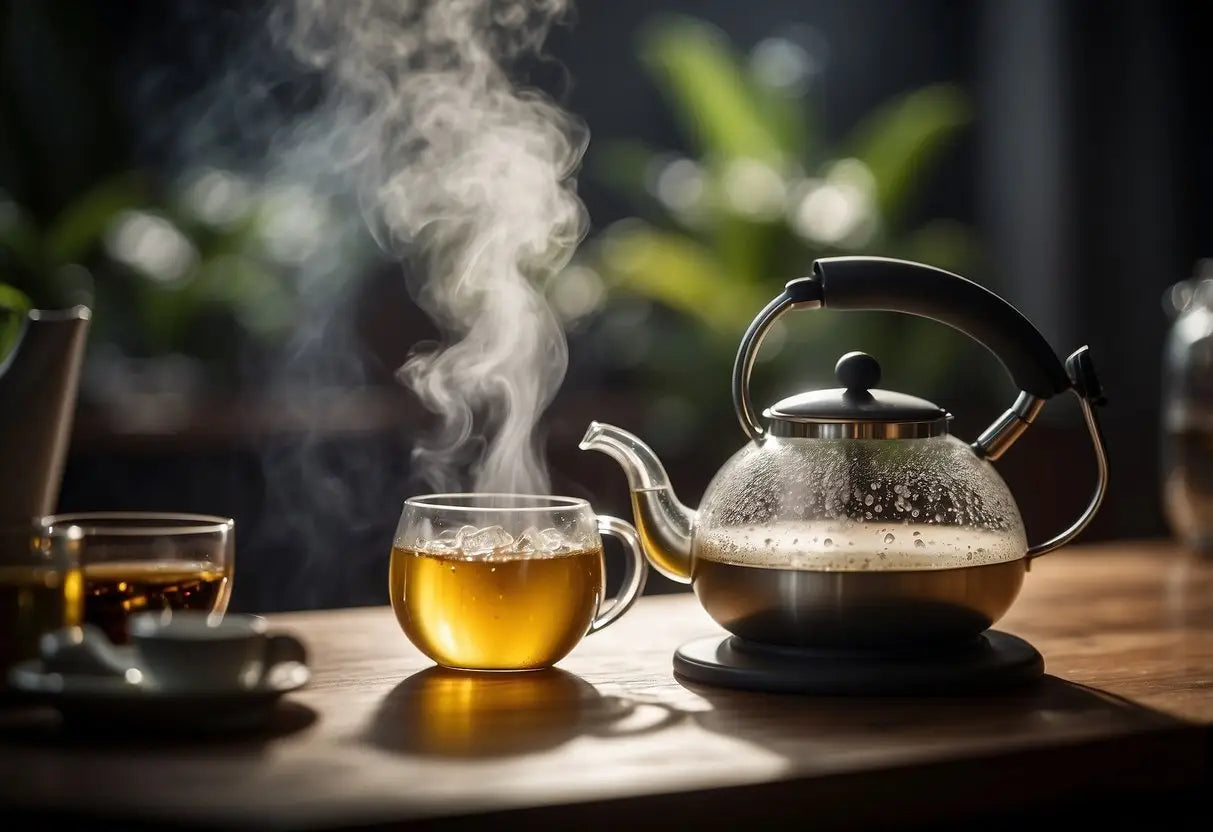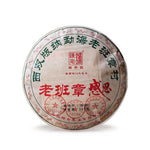Oolong Tea Temperature
When preparing oolong tea, start with high-quality loose leaves. Ensure your teapot or cup is clean.
Water Temperature: Aim for 185°F to 205°F (85°C to 96°C). A temperature within this range enhances flavor without burning the leaves.
Steps for Brewing Oolong Tea
1. Preheat Your Teapot Pour hot water into your teapot or cup, then discard the water.2. Measure the Tea Use about 1 to 2 teaspoons of oolong tea per 8 ounces of water.
3. Infusion Time Steep the tea for 1 to 5 minutes, depending on your taste preference.
Brewing Methods
Western Style:
Bestsellers
- Uses a larger teapot
- Longer steeping time (3-5 minutes)
- Suitable for one main infusion
Gongfu Style:
- Uses a gaiwan or a small Yixing teapot
- Shorter steeping times (typically 30 seconds to 1 minute)
- Multiple infusions (up to 10 or more)
Tips for the Best Flavor
- Fresh Water: Use fresh, filtered water. Avoid distilled or previously boiled water.
- Leaf Quality: Whole leaves generally offer better flavor than broken leaves or tea bags.
- Storage: Store your oolong tea in an airtight container, away from light, moisture, and strong odors.
Experiment with steeping times and leaf amounts to suit your taste.
Ideal Water Temperatures for Oolong Tea
When brewing oolong tea, the ideal water temperature varies by the type. Green oolong varieties benefit from lower temperatures, while dark oolong varieties require hotter water.
Green Oolong Varieties
Green oolong teas, such as Tie Guan Yin and Baozhong, thrive with water temperatures between 175°F and 185°F (about 80°C to 85°C). These temperatures preserve the delicate flavors and prevent bitterness.
Using water too hot can scald the leaves and result in a harsh taste. A good tip is to let boiling water cool for a minute before pouring it over the leaves.
Experimenting within this range can help you find the perfect temperature for your specific green oolong. You may notice slight variations in flavor profiles when adjusting the temperature by just a few degrees.
Dark Oolong Varieties
Dark oolong teas, including Da Hong Pao and Oriental Beauty, require hotter water, typically between 190°F and 200°F (about 88°C to 93°C). These temperatures help fully extract the rich, robust flavors of dark oolong teas.
Hotter water enhances the complexity and depth, bringing out the characteristic roasted or woody notes. Steeping at lower temperatures might result in a weaker infusion that lacks the signature boldness.
To achieve the best results, you can use a thermometer to ensure the perfect temperature or wait 30 seconds after boiling.
Temperature Variation by Oolong Tea Type
Different types of oolong tea require specific temperatures for optimal flavor extraction. Here's a brief guide on the temperature variations:
Light Oolong Teas:
- Baozhong: Best brewed at 185°F (85°C)
- Ali Shan: Ideal temperature is 190°F (88°C)
Medium Oolong Teas:
Lao Ban Zhang
- Tie Guan Yin: Needs about 195°F (90°C)
- Dong Ding: Brew at 200°F (93°C)
Dark Oolong Teas:
- Da Hong Pao: Steep at 205°F (96°C)
- Shui Xian: Use 210°F (99°C)
Proper water temperature is crucial for bringing out the nuanced flavors of each oolong tea type. Adjusting by a few degrees can significantly impact taste and aroma.
For light oolong teas, using a lower temperature helps to avoid bitterness. Medium oolong teas require a slightly higher temperature to release their rich and floral notes.
Dark oolong teas benefit from even hotter water to fully develop their complex, roasted profiles.
Effects of Water Temperature on Oolong Tea Flavor

Different water temperatures can significantly influence the flavor of oolong tea.
Low temperatures (160-180°F or 70-80°C):
- Produces a delicate and light flavor.
- Enhances floral and sweet notes.
- Reduces bitterness and astringency.
Medium temperatures (180-200°F or 80-93°C):
- Balances flavors across the spectrum.
- Brings out a combination of floral, fruity, and sweet elements.
- Maintains a smooth and rounded taste profile.
High temperatures (200-212°F or 93-100°C):
- Extracts stronger, more robust flavors.
- Emphasizes the tea's body and depth.
- Increases bitterness and astringency.
Summary of Temperature Effects:
| Temperature Range | Flavor Profile |
|---|---|
| 160-180°F (70-80°C) | Delicate, light, floral, sweet |
| 180-200°F (80-93°C) | Balanced, floral, fruity, sweet |
| 200-212°F (93-100°C) | Strong, robust, bitter, astringent |
Using lower temperatures is ideal for lighter oolongs, while higher temperatures suit darker, more oxidized oolongs.
Testing different temperatures allows you to discover the unique characteristics of each oolong tea variety.
Steeping Techniques and Temperature Control
When it comes to steeping oolong tea, temperature is a critical factor.
For light oolongs, use water heated to about 185°F (85°C). This ensures delicate flavors are preserved.
Dark oolongs benefit from higher temperatures, around 195°F (90°C). The higher heat helps release rich, complex notes.
Temperature Control Tips:
- Use a thermometer: Ensures accuracy.
- Boil and cool: Boil water, then let it cool to the desired temperature.
- Variable temperature kettle: Convenient for precise control.
Steeping Times:
- Light oolongs: 3-5 minutes
- Dark oolongs: 4-7 minutes
Monitor the color and aroma during steeping to achieve your preferred strength.
Tools for Measuring Water Temperature
When preparing oolong tea, monitoring the water temperature is crucial for the best flavor extraction. Here are some tools to help you measure water temperature accurately:
Digital Thermometers
Digital thermometers provide precise temperature readings and are easy to use.
-
Features:
- Rapid measurements
- Clear digital displays
- Automatic shut-off
Traditional Thermometers
Glass or metal stem thermometers are simple and reliable.
-
Features:
- Spirit-filled for visibility
- Generally less expensive
- Require manual reading
Electric Kettles with Temperature Control
Electric kettles with built-in temperature settings for convenience.
-
Features:
- Preset temperature options
- Automatic shut-off
- Keep-warm functions
Infrared Thermometers
Infrared thermometers allow non-contact temperature measurement.
-
Features:
- No direct contact needed
- Instant readings
- Easy to use
Smart Thermometers
Bluetooth-enabled thermometers that sync with your smartphone.
-
Features:
- App integration
- Custom alerts
- Temperature logs
Using the right tool ensures your oolong tea is brewed at the optimal temperature for the perfect cup.
Common Mistakes to Avoid When Heating Water

Using the Wrong Equipment: Using a microwave can create hot spots and inconsistencies. A kettle or stovetop pot is preferable.
Overheating the Water: Boiling water can burn your oolong leaves. Aim for a temperature between 185°F (85°C) and 205°F (96°C).
Not Monitoring the Temperature: Guessing the water temperature can lead to errors. Use a thermometer for precise control.
Reboiling Water: Reboiling can deplete oxygen, resulting in flat-tasting tea. Always use fresh water for each brew.
Ignoring Altitude: If you are at a high altitude, water boils at a lower temperature. Compensate by heating the water slightly longer or using a thermometer to ensure the correct temperature.
Inconsistent Timing: Heating water too quickly or too slowly can affect quality. Develop a consistent heating routine.
Using Unfiltered Water: Tap water with impurities can alter the taste. Use filtered or bottled water for the best results.
Avoid these mistakes to achieve the perfect brew.
← Older post Newer post →











